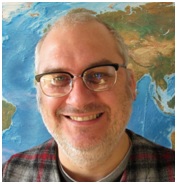| SCOPE |
| ||||
| Simons Collaboration on Ocean Processes and Ecology |
| About Us | News | Data | Funding | Contact Us |

|
Michael J. (Mick) Follows, Ph.D. Associate Professor Department of Earth, Atmospheric and Planetary Sciences Massachusetts Institute of Technology Website: http://ocean.mit.edu/~mick E-mail: mick@ocean.mit.edu |
Project: Interpreting the organization of microbial communities in the North Pacific using theory and numerical simulationsNatural microbial populations can appear bewilderingly complex, with assemblages of organisms spanning many orders of magnitude in size, diverse biochemical functionality, and extremely rich genetic variation. In any system we seek to understand which actors are present, which are absent, and why? What are the consequences for the ecosystem function and the flow of elements in that environment? Idealized theory and numerical simulations provide a means to synthesize and organize understanding of the pressures that shape microbial systems. They help frame hypotheses that can be tested in the laboratory and field. In this collaborative effort we will employ data, theory and numerical simulations to test the hypothesis that the large-scale horizontal and vertical structures of the microbial communities of North Pacific Subtropical Gyre reflect a system close to equilibrium, organized by resource supply ratios. We will develop new, quantitative descriptions of the costs and benefits to the individual of specific functionality, including nitrogen fixation, and of both competition and cooperation between diverse microbes. Basin-scale numerical simulations the circulation, chemistry and ecosystem of the North Pacific will provide a means to illustrate and explore the large-scale consequences of these small-scale interactions. BioMick Follows is Associate Professor of Oceanography in the Department of Earth, Atmospheric and Planetary Sciences at MIT. He seeks to understand how the interactions of physical, chemical and biological processes modulate the structure and function of marine microbial communities and regulate elemental cycles on the global. To this end he develops and employs idealized theory, numerical simulations and analysis of observed data. Over the past decade, he has become increasingly fascinated by the biological and ecological aspects of global elemental cycles and developed a new platform for simulating and interpreting the structure, function and biodiversity of marine microbial populations. The approach relies upon the self-assembly of communities from a diverse pool of virtual phenotypes. It provides a bridge between clean concepts from theoretical ecology and the typically sparse observational data from marine ecosystems. To date, this work has focused on marine phytoplankton populations. Currently, Follows and his group are extending the approach to provide more general description of marine microbes including heterotrophic bacteria, small predators and viruses. To understand the ecological sorting of populations, we are seeking to quantitatively understand and model the costs and benefits for the individual of particular microbial lifestyles. Follows is a Fellow of the American Academy of Microbiology. | |